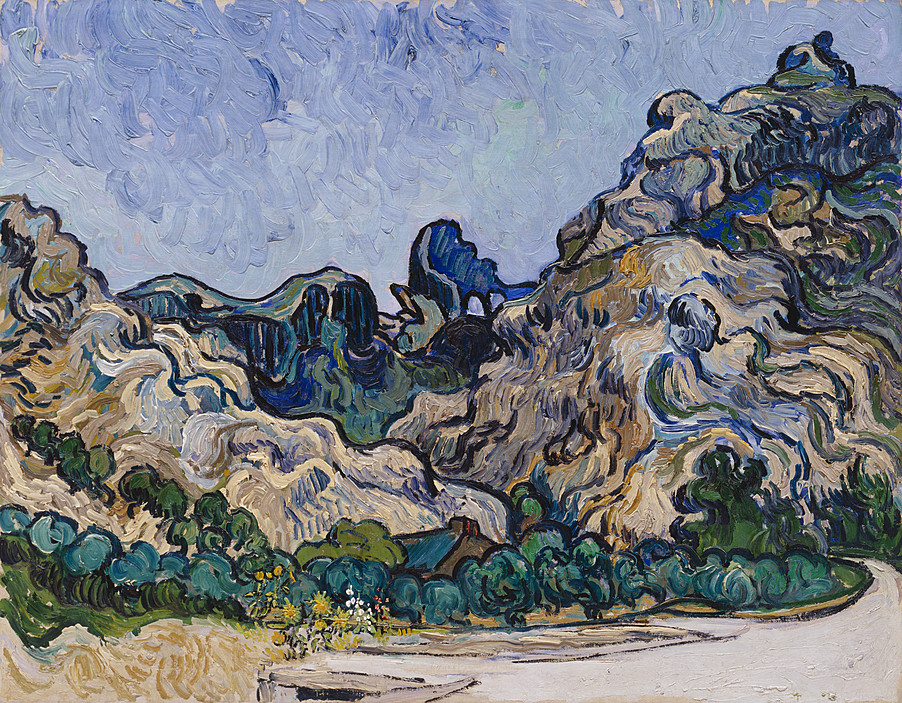Винсент Ван Гог - Горы в Сен-Реми с темными коттеджами 1889
 |
 |
 |
 |
 |
 |
 |

Горы в Сен-Реми с темными коттеджами 1889
71x90см холст/масло
The Solomon R. Guggenheim Museum, New York
<< Previous G a l l e r y Next >>
From The Solomon R. Guggenheim Museum, New York:
During the years preceding his suicide in 1890, Vincent van Gogh suffered increasingly frequent attacks of mental distress, the cause of which remains unclear. Mountains at Saint-Rémy was painted in July 1889, when Van Gogh was recovering from just such an episode at the hospital of Saint-Paul-de-Mausole in the southern French town of Saint-Rémy. The painting represents the Alpilles, a low range of mountains visible from the hospital grounds. In it, Van Gogh activated the terrain and sky with the heavy impasto and bold, broad brushstrokes characteristic of his late work.
Van Gogh advocated painting from nature rather than inventing a motif from the imagination. On a personal level, he felt that painting outdoors would help to restore his health, a sentiment he often voiced when writing to his brother, Theo. He mentioned this painting several times in his letters, relating it to a passage from Edouard Rod’s Le Sens de la vie. In one note he wrote, “I rather like the ‘Entrance to a Quarry’—I was doing it when I felt this attack coming on—because to my mind the somber greens go well with the ocher tones; there is something sad in it which is healthy, and that is why it does not bore me. Perhaps that is true of the ‘Mountain’ too. They will tell me that mountains are not like that and that there are black outlines of a finger’s width. But after all it seemed to me it expressed the passage in Rod’s book . . . about a desolate country of somber mountains, among which are some dark goatherds’ huts where sunflowers are blooming.”
Nature had a quasi-religious or transcendental significance for Van Gogh. Unlike the earlier Impressionists, who often painted urban life, the artist felt that the city, in particular Paris, was a place of iniquity, inherently unhealthful. In the face of industrialization and modernization (the Eiffel Tower was built the same year that this canvas was painted), Van Gogh longed nostalgically for a rural environment peopled with good-natured, God-fearing peasants such as those painted by Jean-François Millet, one of his heroes. This utopian ideal, based on a belief in the regenerative capacity of a “primitive” culture, was shared by Van Gogh’s friend Paul Gauguin, who sought redemption farther from home, among the people of Tahiti.
Jennifer Blessing